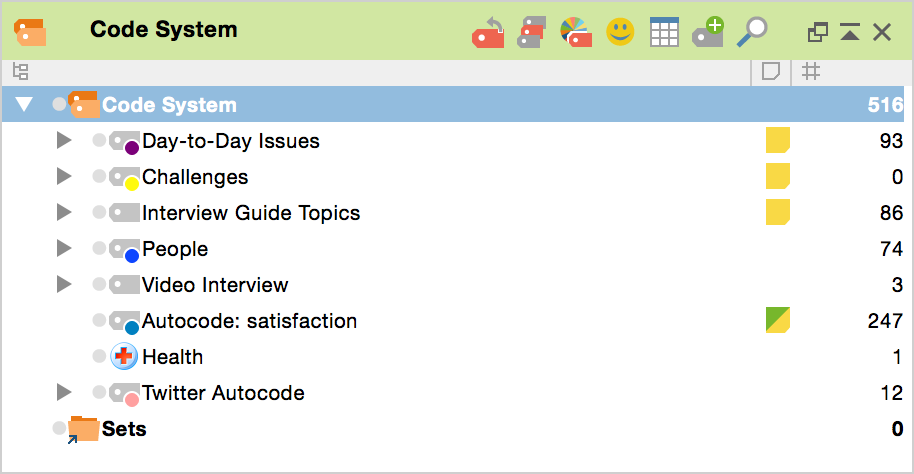Every code and subcode can be assigned a color. This color attribute is used for the display of coding stripes in the “Document Browser” and for visualizations. The colored coding stripes make it especially easy to find certain coded segments in documents in the “Document Browser.”

The color is also seen in the bottom right of the icon next to each code in the “Code System.”

The color attribute is also displayed in all MAXQDA tables that contain codes, e.g. in the “Overview of coded segments” table that is available for each document group and each document. There, the color attribute may be used as a criterion for sorting the table. This is done by clicking on the column header of the column containing the colored icons. Unless you have changed the order of the table’s columns, this column will be the first one in the table.

The color attribute plays an important role in all visual tools of MAXQDA. For instance, the Document Portrait is based completely on the colors of the codes that are assigned to a particular document. Thus, the selection of colors is an important step: colors should be assigned according to the kind of analysis that you plan to conduct. For instance, a psychologist could assign red colors to aggressive statements and green colors to friendly statements. When analyzing documents in regard to the topics mentioned a meaningful association of topics and codes is recommended. Thus, you are able to identify topics and combinations of topics with one glance. When working with focus groups, you should associate the speakers with the different colors, in order to quickly find out when a person is speaking.
